The LG G3 Review
by Joshua Ho & Anand Lal Shimpi on July 4, 2014 5:00 AM EST- Posted in
- Smartphones
- LG
- Mobile
- Laptops
- G3
CPU Performance
By now, the Snapdragon 801 is mostly well-understood. It has four Krait 400 cores at either 2.26 or 2.45 GHz, an Adreno 330 at 578 MHz, a faster ISP, DSDA support, and higher clocks on the memory interface, along with support for eMMC 5.0 for faster NAND speed. However, OEM design choices can have significant effects on the relative performance of a device. For example, the Galaxy S5 trailed behind the HTC One (M8) despite a faster SoC due to worse thermal dissipation. This was because water resistance necessitated a new design that effectively encased the SoC in a polycarbonate cage, trapping heat in. The LG G3 has the same SoC and same build materials as the Galaxy S5, but the midframe is magnesium, not polycarbonate. This means that peak performance can be higher than the Galaxy S5.
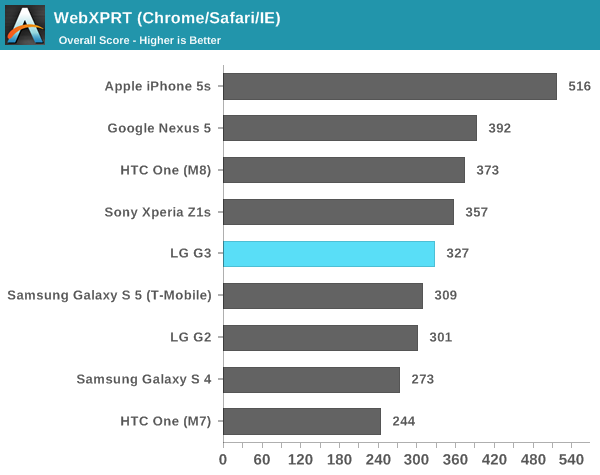
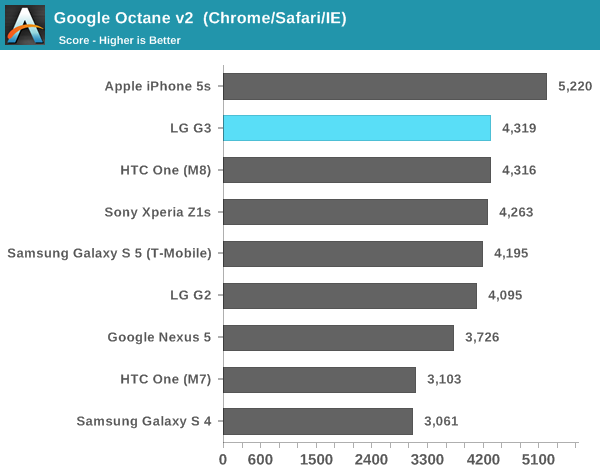
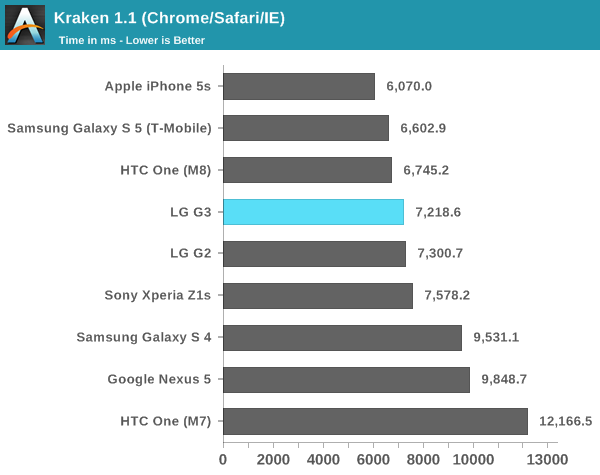
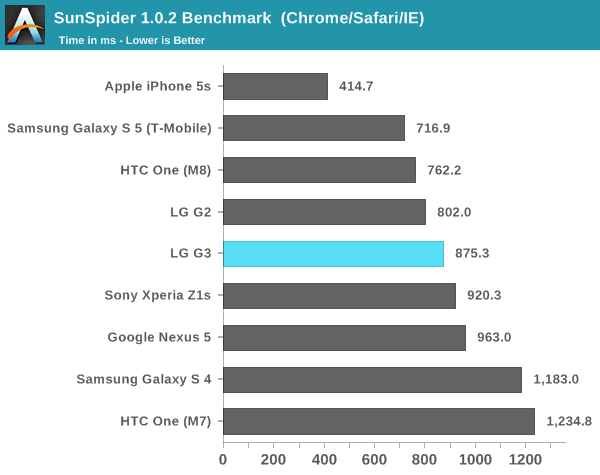
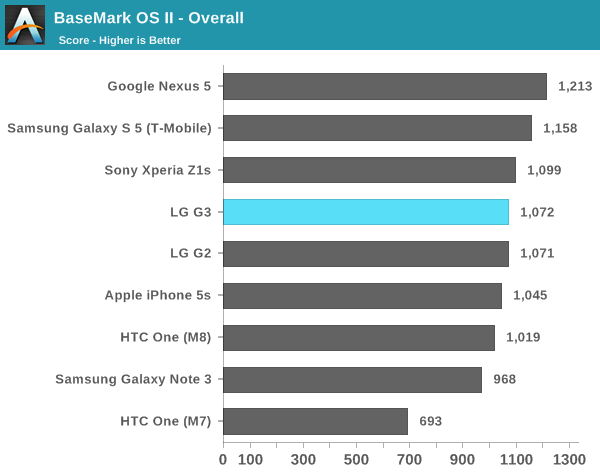
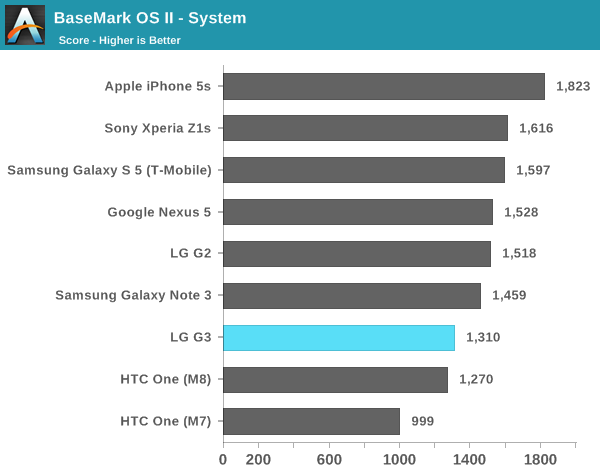
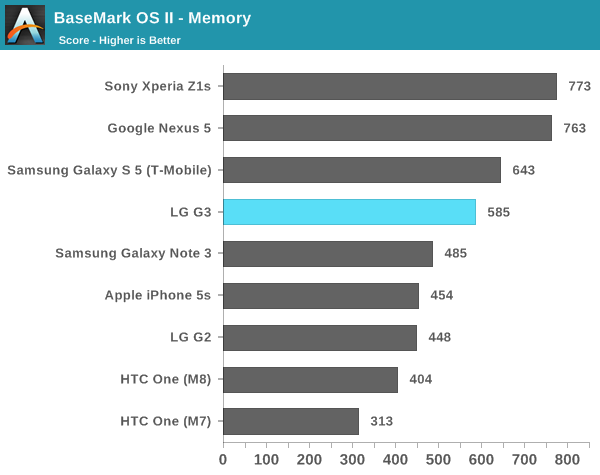

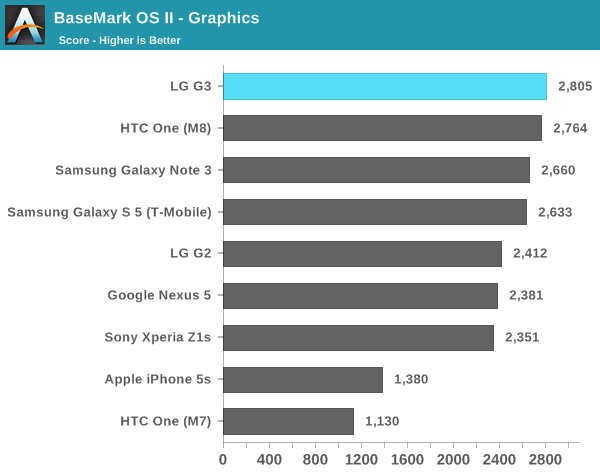
Relatively speaking, there's not much in the way of interesting things to talk about here, despite the new configuration. The G3 seems to trail the other S801 devices in web performance but it seems to depend upon the benchmark. This seems to be partially because of the G3's willingness to throttle, or because of the display's heat output. Either way, the trend is clear because of how often the display brightness is capped to 90 or 95 percent of the maximum to cool off the phone. When this isn't an issue though, the short benchmarks tend to show the faster performance of the G3.
GPU Performance
While the state of CPU benchmarking is heavily subject to difference in the performance of the web browser, things are a bit better in the GPU side. All Snapdragon 801 SoCs have the same GPU clocks, so this means that it'll be much easier to examine throttling behavior and reduce variability due to confounding factors.
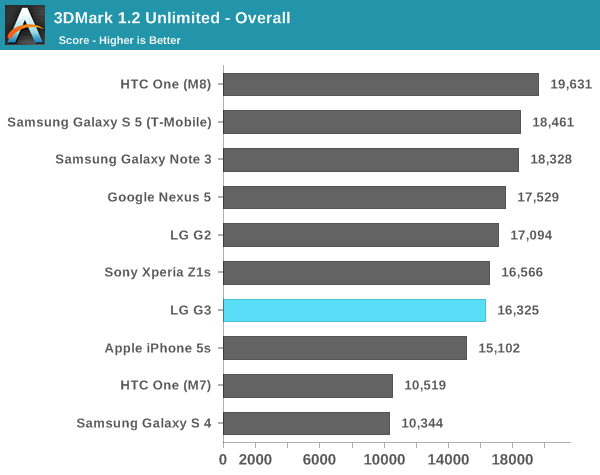
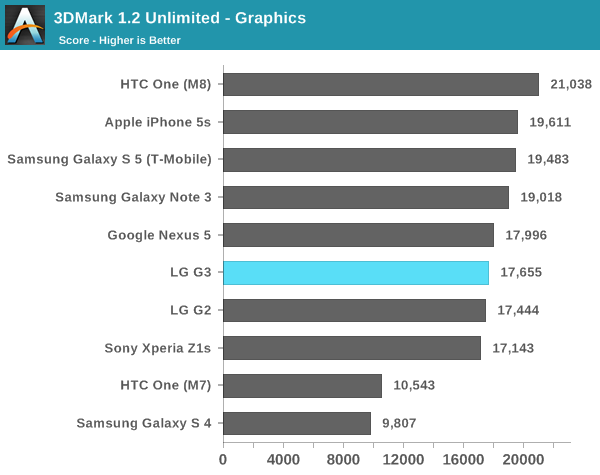

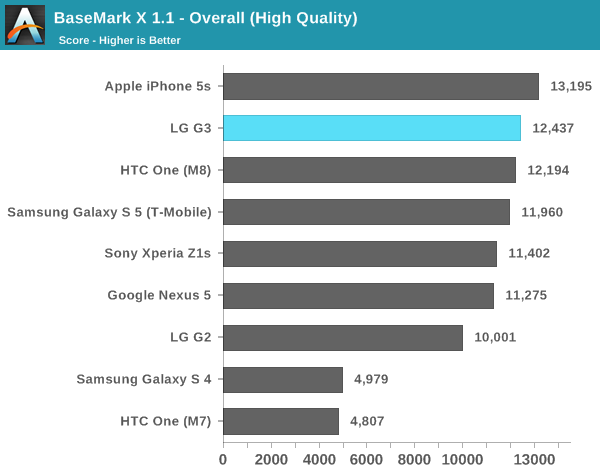
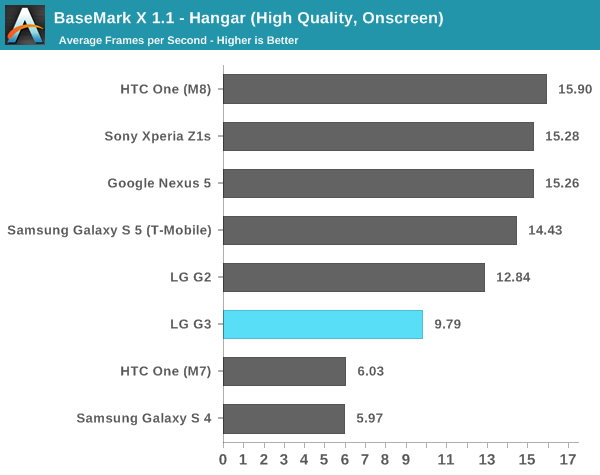
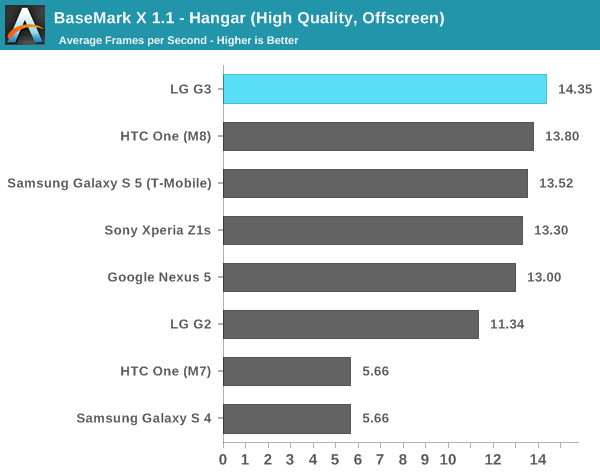
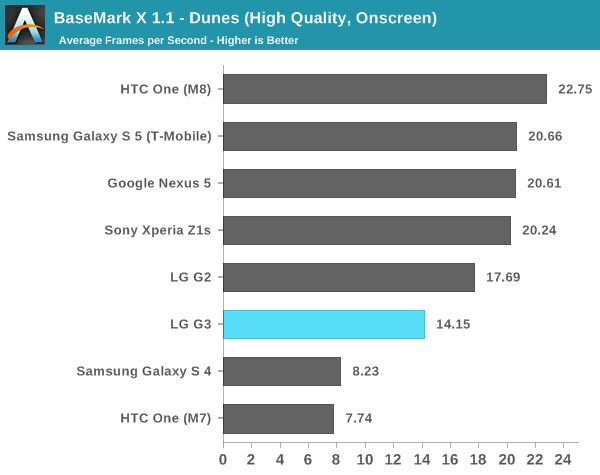
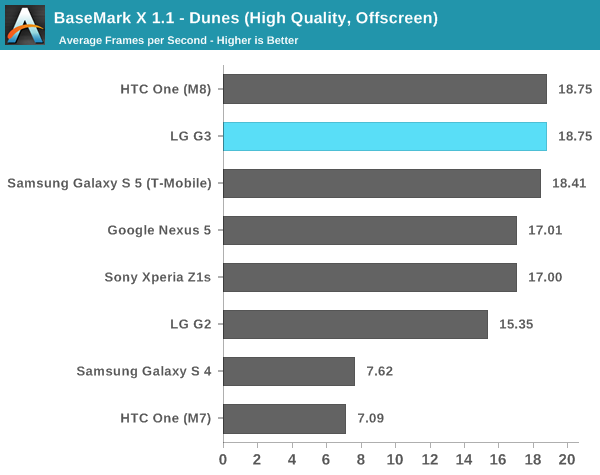
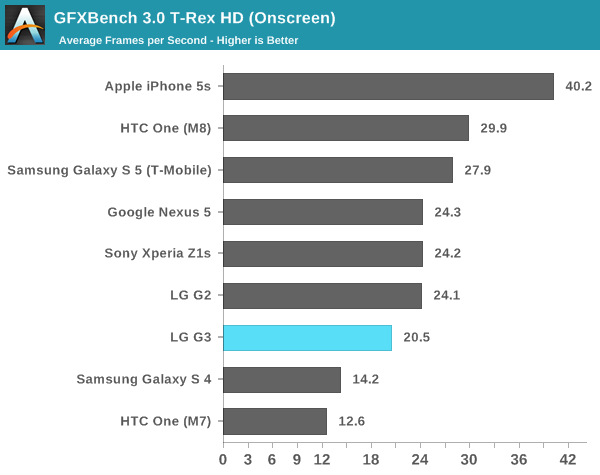
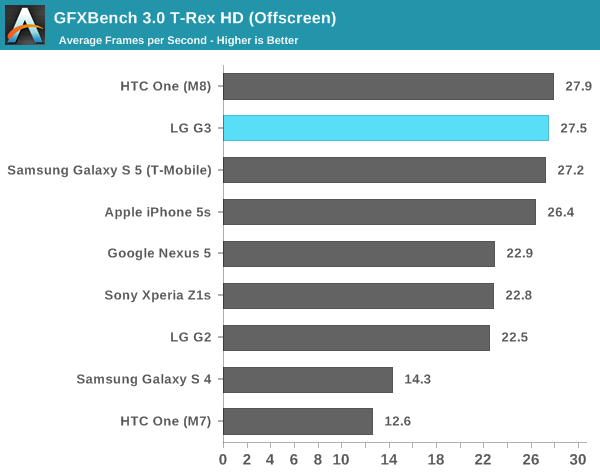
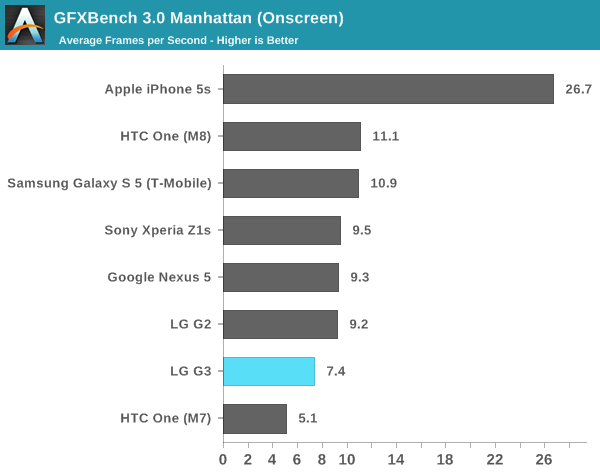
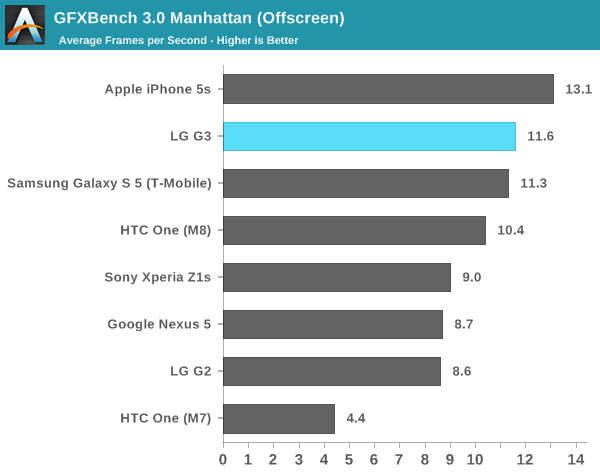
Here, we can see a noticeable trend. In the short tests, the LG G3 does great, easily nearing the top of the scores. However, 3DMark's extremely long-running test means that the G3 noticeably suffers in performance compared to the competition, and this is worsened by the G3's sinusoidal throttling patterns that cause significant degradation of performance for periods of time to balance out the high performance periods. On the on-screen tests, the G3 does worse than the high-end competition, which suggests that QHD/1440p truly does need Snapdragon 805's Adreno 420 in order to keep real-world performance from regressing relative to the Snapdragon 801, 1080p-screened counterparts.
NAND Performance
NAND performance used to be an afterthought, and effectively never discussed in most reviews. However, after the original Nexus 7 revealed the headaches that come with poor I/O performance this metric has increasingly come under greater scrutiny. To quantify this performance, we turn to Androbench with custom settings to evaluate Android smartphones.
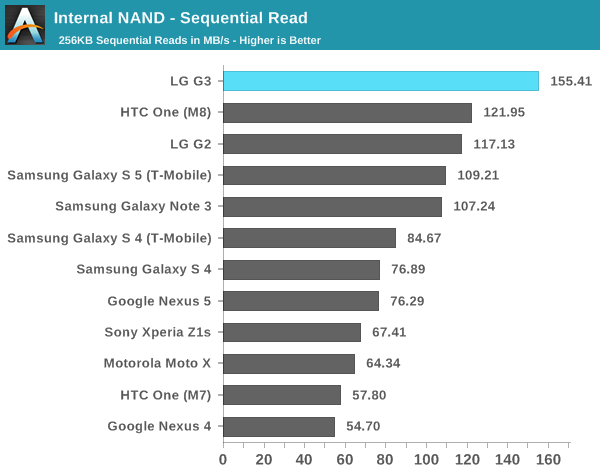
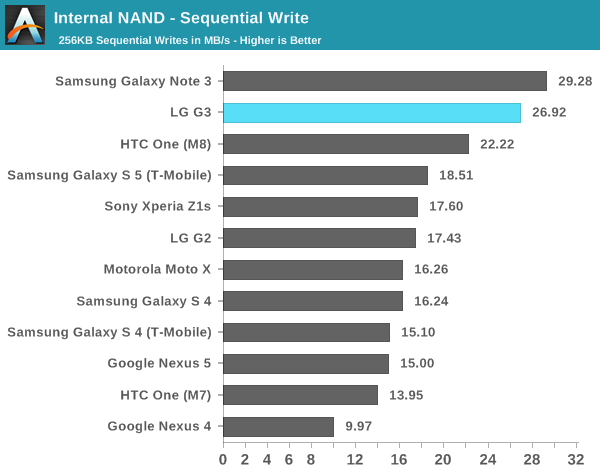
Here, the G3 is off to a great start. The sequential read speeds set new records and sequential write speeds are almost as good as it gets. This means that LG isn't cheaping out on NAND, which means that shooting 4K video and similarly intensive situations won't be a problem on the G3. However, random I/O performance is much more important as that's where people will notice poor performance in the form of stuttering and pauses.

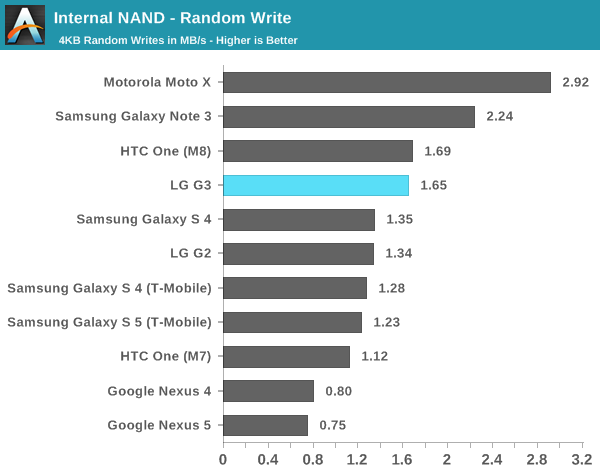
Here, we see a similar pattern. The LG G3 does great in random reads, but random write isn't quite as great. It's still perfectly usable and shouldn't present any problems for smoothness or general performance. The Moto X continues to hold its considerable lead here due to its F2FS file system that allows for much faster random I/O performance. Overall, the LG G3 shouldn't have any issues with I/O pauses, although you should still keep around 25% of your storage open to keep up I/O performance.










174 Comments
View All Comments
SlyFoxHD - Friday, July 4, 2014 - link
LG G3 battery can withstand 6 hours of screen-on time,on full brightness.And watch
Suck it up.
http://www.phonearena.com/news/First-improvised-LG...
Flunk - Friday, July 4, 2014 - link
What you're saying isn't really compatible with what's said in this article, if it dims the screen even when you set the brightness manually how can you possibly test at 100% brightness?Troll fail.
mahalie - Friday, July 4, 2014 - link
It only dims the screen slightly if the phone is in danger of overheating, so it's possible to test the screen at 100% brightness.Alexey291 - Sunday, July 6, 2014 - link
So its 100% but its not full brightness - way to twist words /sighfokka - Friday, July 4, 2014 - link
full brightness*david4041 - Friday, July 4, 2014 - link
No.. If LG G3 had the same resolution as the GS5 or M8, with the bigger screen it would not have been as sharp (ppi). What LG managed to do was build a phone with a significantly bigger screen AND a higher ppi. And since the G3 has a thinner bevel, it isn't much bigger than the GS5 and M8.Battery life? From what I've read, the phone should last all day. That's all one really needs. Charge the phone at night, charge it while you're at your desk, charge it in the car, buy an extra battery, buy a battery pack.
peterfares - Friday, July 4, 2014 - link
It would have been plenty sharp with an RGB 5.5" screen. Look at the Note 3, that has a PenTile 1080p 5.7" screen.soldier45 - Sunday, July 6, 2014 - link
Haters going to hate innovation and moving forward with tech.flatrock - Tuesday, July 8, 2014 - link
The G3 is a showcase for what LG is capable of, so spec-sheet oneupmanship is to be expected. I would like to see 1080p screens show up on some slightly smaller and more affordable devices. Or LG can just keep making the G2 for a while. The G2 is a great phone and is still a high end phone even this long after the initial release. If the G3 didn't pull some spec-sheet oneupmanship the reviews would just be complaining about a lack of compelling differences from the G2. I guess it's the price LG pays for doing the G2 so well.barleyguy - Tuesday, July 8, 2014 - link
One place I can think of where the resolution would be a benefit, is Google Cardboard, or future VR implementations that use the same idea. With VR, the resolution of a small screen makes a significant difference, from what I've read.I'm pondering a G3 for that reason, as well as the removable battery and SD slot.